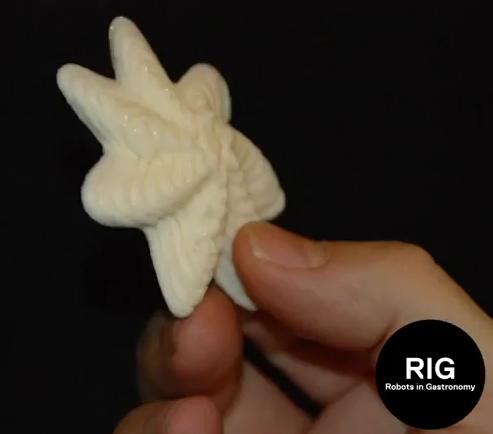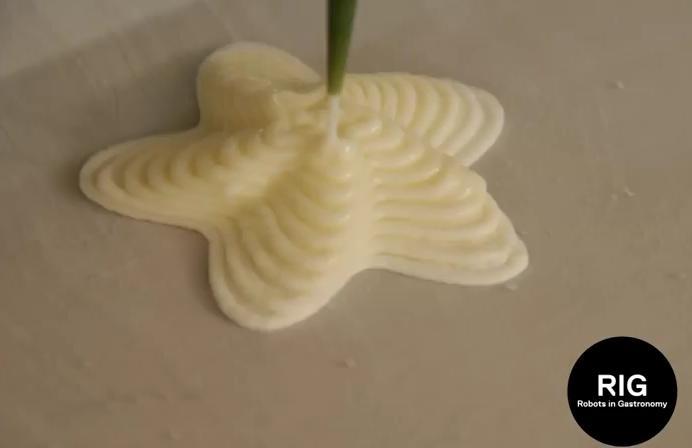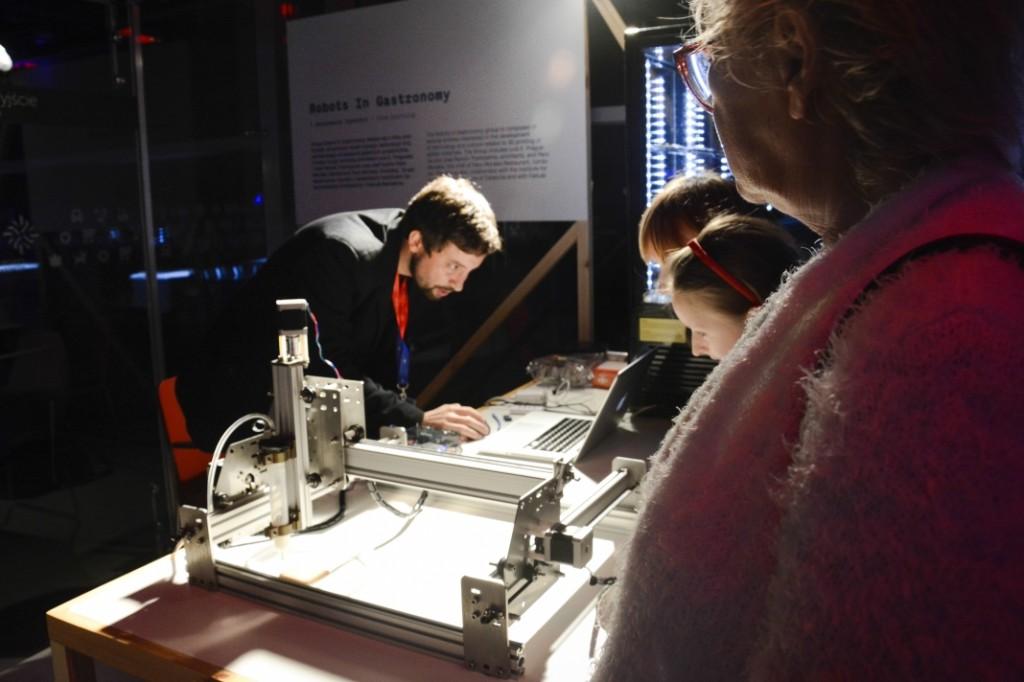 Two weeks ago, 3DPrint.com broke a story about a 3D printer that could print in ice cream. It was created by students at MIT, as part of a graduate class on additive manufacturing. The printer was capable of printing out general shapes of objects, but had not yet mastered the technique. Today, Luis E. Fraguada, who runs a Barcelona based research group, Robots In Gastronomy, has informed 3DPrint.com that they have also created a 3D printer capable of printing ice cream.
Two weeks ago, 3DPrint.com broke a story about a 3D printer that could print in ice cream. It was created by students at MIT, as part of a graduate class on additive manufacturing. The printer was capable of printing out general shapes of objects, but had not yet mastered the technique. Today, Luis E. Fraguada, who runs a Barcelona based research group, Robots In Gastronomy, has informed 3DPrint.com that they have also created a 3D printer capable of printing ice cream.
The 3D printer is called the FoodForm, and it has been around for quite a while now. It is capable of printing in several different types of food, including fresh honey, cream cheese, crepe batter, cake dough, fresh fruit/vegetable puree, eggs, pasta, cookie dough, and much more. Yesterday, however, Fraguada and team perfected a recipe for 3D printing ice cream.
“It is a basic ice cream recipe (vanilla),” Fraguada told 3DPrint.com. “Our machine allows the user the ability to print onto any surface, be it a plate, a heated surface, or, in the case of the ice cream, a cold surface. We used the Anti-Griddle from Polyscience. This machine cools a plate to -34°C and was the perfect match for printing I’ve cream. We were able to print about 10mm and still get the top layers to be frozen.”
Robots In Gastronomy got a little help from Cocktail Lab, who allowed them to use their Anti-Griddle, which is basically exactly what it sounds like – a griddle that can reach temperatures as low as -30°F / -34.4°C.
This method differs significantly from the one used by the MIT students, in that instead of using liquid nitrogen to freeze the ice cream as it is extruded onto a build plate, Robots In Gastronomy replaced both the liquid nitrogen and the 3D printer build plate with just the Anti-Griddle. The Anti-Griddle acts as the build plate, for those familiar with more traditional 3D printers, and freezes the ice cream as soon as it is extruded. This ensures that the design being printed holds its shape and does not melt.
Fraguada also told us that they are releasing a new model of the FoodForm 3D printer very soon. This is by far the most precise printing of ice cream that I have seen yet. FoodForm can also maintain this precision with many other foods, some of which are listed above. They currently mainly work with chefs and catering companies to 3D print personalized and custom treats.
What do you think about the precision that the FoodForm is capable of, when printing in ice cream. Discuss in the FoodForm 3D Printing Ice Cream forum thread on 3DPB.com. Check out the video of the FoodForm printing ice cream below:
Subscribe to Our Email Newsletter
Stay up-to-date on all the latest news from the 3D printing industry and receive information and offers from third party vendors.
You May Also Like
Printing Money Episode 17: Recent 3D Printing Deals, with Alex Kingsbury
Printing Money is back with Episode 17! Our host, NewCap Partners‘ Danny Piper, is joined by Alex Kingsbury for this episode, so you can prepare yourself for smart coverage laced...
Insights from Cantor Fitzgerald on AM’s Q1 2024 Landscape
A recent survey by Cantor Fitzgerald sheds light on the persistent challenges within the additive manufacturing (AM) industry in the first quarter of 2024. Based on responses from 38 industry...
3D Printing Financials: Xometry’s Scaling up and Strong Start to 2024
Xometry (Nasdaq: XMTR) kicked off 2024 with strong results, boosting its marketplace and technology to new heights. Both revenue and gross margin soared, fueled by an expanding global network of...
3D Printing Financials: Desktop Metal Targets Recovery Amid Net Losses and Revenue Downturn
Despite facing a decline in revenue and the persistent challenges of a tight economic climate, Desktop Metal (NYSE: DM) is making strides toward operational efficiency. The first quarter of 2024...


































